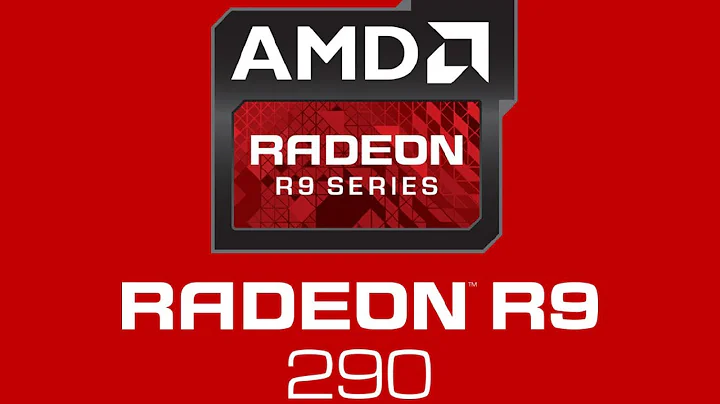Unlocking AI Acceleration: Mixed Precision Training Explained
Table of Contents
- 👨💻 Introduction to Mixed Precision Training
- 🚀 Benefits of Mixed Precision Training
- 📈 Improved Speed
- 💾 Memory Efficiency
- 🛠️ Experimentation with Larger Networks
- ❓ Why Mixed Precision Training?
- 💡 Benefits of Torch Half (FP16)
- 💻 Hardware Support on NVIDIA GPUs
- ❔ Why Not Stick with Default Torch Float (FP32)?
- 📉 Memory Storage
- 💨 Speed-Up for Bandwidth Bound Operations
- 🔄 Dynamic Range and Precision of FP32
- 💡 Optimizer Updates and Accumulations
- 💡 The Concept of Mixed Precision
- 🏋️♂️ Practical Application and Performance
- 📊 Speed-Ups on Real World Networks
- 🎯 Impact on Accuracy
- 🛠️ Implementing Mixed Precision Training
- 🧰 Automatic Mixed Precision (AMP) Tool
- 🔧 Available Utilities and Examples
- 📈 Future Developments in PyTorch
- 🎉 Collaboration with PyTorch Core Team
- 📋 API Requests and Contributions
- 🤔 Conclusion and Call to Action
Introduction to Mixed Precision Training
In the realm of deep learning, optimizing model training processes is crucial for efficiency and performance. One groundbreaking approach gaining traction is mixed precision training, a technique harnessing the capabilities of NVIDIA GPUs to accelerate computations.
Benefits of Mixed Precision Training
📈 Improved Speed: By leveraging mixed precision, neural networks can experience substantial speed-ups, enabling faster model convergence and reduced training times.
💾 Memory Efficiency: Mixed precision allows for more efficient memory utilization, enabling the training of larger networks or batch sizes without sacrificing accuracy.
🛠️ Experimentation with Larger Networks: The saved memory and increased speed facilitate experimentation with larger models, unlocking new possibilities in deep learning research.
Why Mixed Precision Training?
💡 Benefits of Torch Half (FP16): Torch half or FP16 conserves memory by utilizing half the storage of FP32, while offering significant speed-ups for bandwidth-bound operations.
💻 Hardware Support on NVIDIA GPUs: NVIDIA's Tensor Cores provide dedicated hardware support for FP16 operations, delivering remarkable computational throughput for matrix multiplies and convolutions.
Why Not Stick with Default Torch Float (FP32)?
📉 Memory Storage: FP16's reduced memory footprint translates to efficient storage, crucial for handling large-Scale neural networks and datasets.
💨 Speed-Up for Bandwidth Bound Operations: Operations such as matrix multiplies and convolutions witness exponential speed-ups on NVIDIA GPUs with FP16 input, thanks to dedicated tensor cores.
Dynamic Range and Precision of FP32
💡 Optimizer Updates and Accumulations: Certain operations, like accumulator updates, benefit from FP32's wider dynamic range and increased precision, ensuring stable and accurate training.
The Concept of Mixed Precision
Mixed precision training optimizes operations by assigning each task its optimal precision, combining the speed of FP16 with the precision of FP32, thereby maximizing hardware capabilities.
Practical Application and Performance
📊 Speed-Ups on Real World Networks: Diverse real-world networks demonstrate substantial speed-ups through mixed precision training, with varying impacts depending on computational or bandwidth constraints.
🎯 Impact on Accuracy: Despite precision adjustments, networks trained with mixed precision converge to comparable accuracy as their FP32 counterparts, validating the efficacy of the approach.
Implementing Mixed Precision Training
🧰 Automatic Mixed Precision (AMP) Tool: The AMP tool automates precision assignment, simplifying implementation with minimal code adjustments, and is readily available through the NVIDIA repository of APEX utilities.
🔧 Available Utilities and Examples: Extensive examples and utilities showcase best practices in mixed precision training, empowering practitioners to harness its benefits effectively.
Future Developments in PyTorch
🎉 Collaboration with PyTorch Core Team: Ongoing collaboration aims to integrate native support for mixed precision training directly into PyTorch, enhancing accessibility and usability for developers.
📋 API Requests and Contributions: Feedback and contributions from the community Shape the development process, ensuring the implementation aligns with diverse user needs and use cases.
Conclusion and Call to Action
Mixed precision training stands as a transformative approach in deep learning, offering a convergence of speed, efficiency, and accuracy. Embracing this technique, alongside ongoing advancements in tooling and platform support, paves the way for accelerated innovation and breakthroughs in AI research and application.
Highlights
- Mixed precision training optimizes neural network computations, leveraging the speed of FP16 and precision of FP32.
- NVIDIA's Tensor Cores provide dedicated hardware support for FP16 operations, enabling significant speed-ups.
- Despite precision adjustments, networks trained with mixed precision converge to comparable accuracy as pure FP32 training.
- The Automatic Mixed Precision (AMP) tool simplifies implementation, facilitating adoption and experimentation.
- Collaboration with the PyTorch Core Team aims to integrate native support for mixed precision training, enhancing accessibility.
FAQ
Q: How does mixed precision training impact model accuracy?
A: Mixed precision training typically maintains comparable accuracy to pure FP32 training, ensuring minimal impact on model performance.
Q: Can any neural network benefit from mixed precision training?
A: While many networks can benefit, those heavily reliant on matrix multiplies and convolutions see the most significant speed-ups due to dedicated hardware support.
Q: Are there any downsides to implementing mixed precision training?
A: While mixed precision offers substantial benefits, it requires careful consideration of precision adjustments and potential impacts on certain operations like accumulator updates.
 WHY YOU SHOULD CHOOSE TOOLIFY
WHY YOU SHOULD CHOOSE TOOLIFY

























